NZXT Kraken G10 Review: Liquid Cooling for Your GPU
by E. Fylladitakis on March 11, 2014 1:15 AM EST- Posted in
- Cases/Cooling/PSUs
- NZXT
- Water Cooling
- Kraken
- G10
The Kraken G10
Essentially, the Kraken G10 is just a steel bracket that locks onto an Asetek-based round waterblock and allows its installation on graphics cards. NZXT offers the Kraken G10 in three glossy colors: black, white and red. We received the black version of the bracket.
The paintjob is very good at the top of the bracket, with a very clean glossy finish, yet it's not very good on the bottom side of the bracket, as it is uneven and even sagging near the edges. It is the top side that will be visible once the cooler is installed on a card, yet a more careful paint job would not hurt. The company logo is etched on the side of the Kraken G10, in direct line of sight from a side panel window. Two large cable tie mounting points can also be seen, which can be used to hold the hoses and/or the cables of the liquid-cooler.
Installation
The installation of the Kraken G10 is fairly easy. Once the stock cooler of the graphics card has been removed, the 92mm fan should be installed on the bracket with its engine facing upwards. Then the bracket can be easily installed on the liquid-cooling block by using the same plastic locking ring included with the kit's CPU installation hardware. Ideally, the hoses should be facing towards the front side of the bracket, as the cable ties can be used to hide them behind the bracket.
Once the block+bracket assembly is complete, it is a simple matter of using the backplate and installation screws included with the G10 in order to attach it to a graphics card. The installation of the Kraken X40 kit with the aid of the Kraken G10 on an EVGA GTX770 is depicted in the gallery below.
Note that it may be necessary to remove more than just the main cooler of the graphics card; as shown below, the RAM/VRM heatsink of the graphics card prevented the block from seating on the GPU and had to be removed as well. This will vary according to your choice of GPU/card.


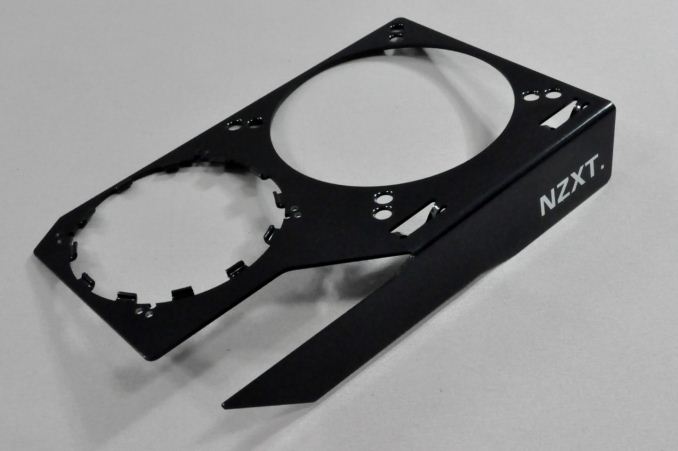
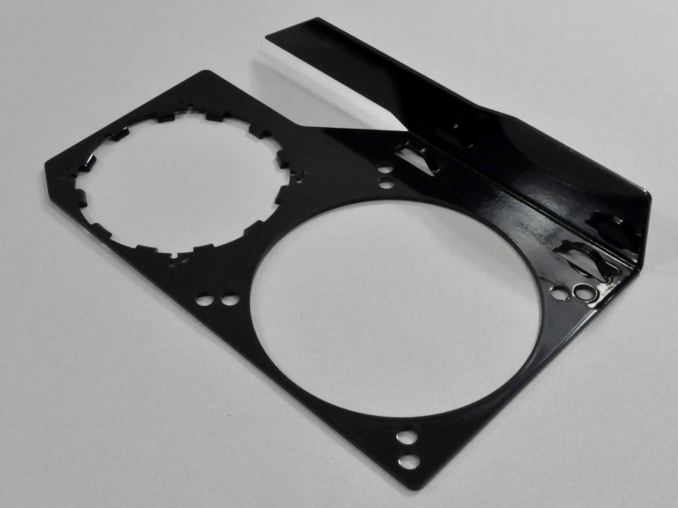
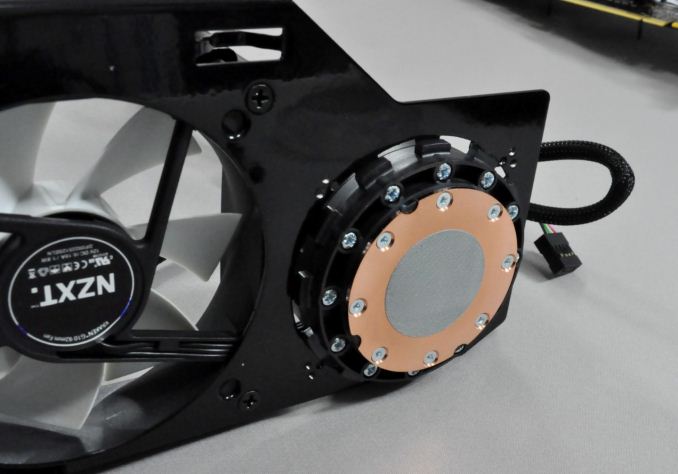
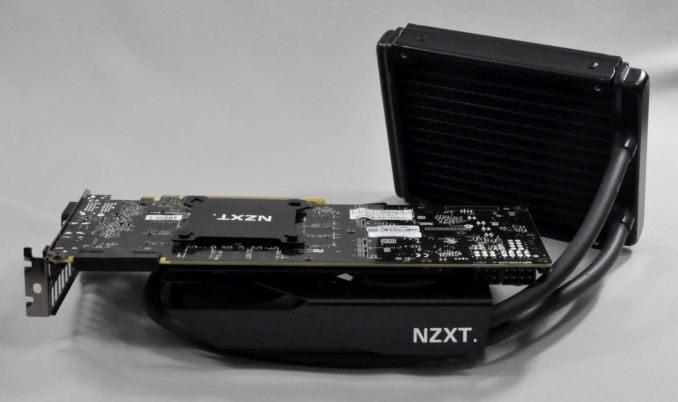
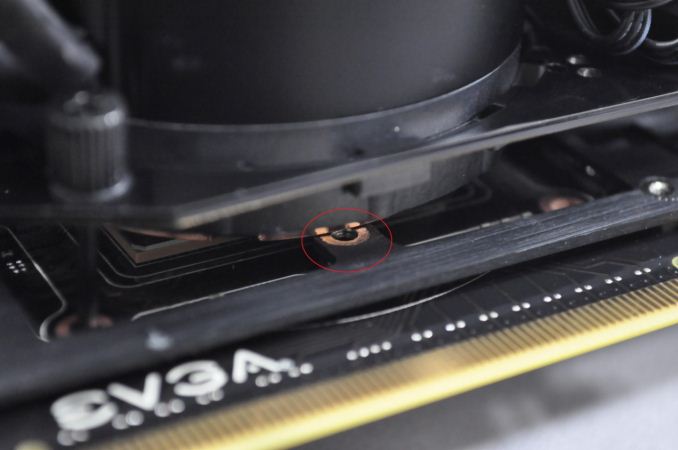








61 Comments
View All Comments
Nirvanaosc - Tuesday, March 11, 2014 - link
... the fan speed / temperature curve. Just perfect.I have it controlling 8 fans + 2 pumps (6 GPU and + pump and 2 CPU + pump) in 3 PWM channels.
Streetwind - Tuesday, March 11, 2014 - link
You claim that there is currently no competing product, but what about Arctic Cooling's Accelero Hybrid cooler? True, it's not just a bracket, but rather a complete solution. But still, it does the same thing, cooling the GPU with a closed water loop and the other onboard components with a small dedicated fan. It's been on the market since summer 2012.Overall though, I like the flexibility the mounting bracket offers. Users can pick and choose the liquid loop they want or need for their card and/or goals, which is important considering how much the various solutions differ in terms of price, noise and performance. And in general, I think that closed liquid loops are horribly overpriced and overspecced for CPU cooling without showing any real advantage over air solutions, whereas on a GPU their high potential can actually be utilized (as the temperature results in this test show).
Now if we could just get an Asetek pump unit that was truly quiet in idle mode, even I might start to show genuine interest... ;)
SquattingDog - Tuesday, March 11, 2014 - link
Any chance of testing additional cards, such as the 7970/280X as these require "shims" which do not appear to be included in the kit?! Also other higher power cards such as 780GTX, 290 and 290X would be great to see how it performs with them.Folterknecht - Tuesday, March 11, 2014 - link
http://www.tomshardware.de/r9-290-umbau-wasserkuhl...BlakKW - Tuesday, March 11, 2014 - link
In terms of what I might spend money on in the near-future, this is the most interesting mini-review + comments that I've seen on AT in long time... tyGigaplex - Tuesday, March 11, 2014 - link
"While saying, "80 °C to 45 °C – oh, that's 44% lower temperatures" is technically correct"No, it's not even technically correct. When comparing temperatures like this, you need to either measure the delta from ambient (sensible) or measure from absolute zero (less sensible). 45 °C is not 56% of 80 °C, convert to Fahrenheit and try to make the same claim.
JarredWalton - Tuesday, March 11, 2014 - link
Of course it's "technically correct", meaning that the temperature dropped 45C. But as we go on to explain, that's not really looking the right aspect. It's like arguing that saying "the sun is shining" isn't "technically correct" because if we get into the nitty gritty details, "shining" isn't really the right word. Good grief! There are all sorts of reasons to not simply compare temperatures, which is why E. uses the more useful C/W and explains why it's more useful.JarredWalton - Tuesday, March 11, 2014 - link
Maybe we should switch to Kelvin though? LOLRick83 - Wednesday, March 12, 2014 - link
It's not technically correct, and NZXT should be called out for spouting such ridiculous marketing rubbish.It's just as incorrect as 4 inches being twice as long as 3 inches, because 0 inch celsius is equal to 2 inches. You cannot use linear scaling with fixed offset units. Doing so to get impressive marketing numbers is misleading, and should be punished. I for one will avoid NZXT, thanks to this ludicrous display of marketing mistakes, where the engineers weren't asked to proofread wild marketing claims.
E.Fyll - Tuesday, March 11, 2014 - link
You are correct. Unfortunately my original text was phrased in a rather, um, "insensitive" manner, and thus an editor rightfully felt that he had to edit it. It is my fault, as I need to be more careful of how I phrase certain things.True enough, it is not technically correct. It just is not correct at all, in any way possible. :)